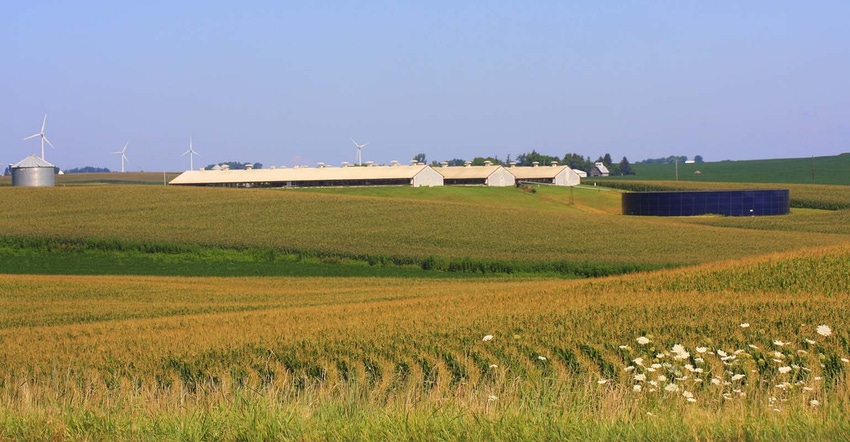
On April 22 another Indiana appellate court ruled against individuals complaining about a hog barn in Hendricks County.
In another typical story, similar to the ones in North Carolina, the Indiana defendants had farm property which had been in the family for more than two decades. The land had been used since 1994 for corn and soybeans. The Hendricks County Planning Commission found that the farmers had planned a concentrated animal feeding operation (CAFO) which substantially complied with the Hendricks County comprehensive plan.
The plaintiffs, much like those in the Smithfield North Carolina case, complained “...that their use and
enjoyment of their homes, as well as their homes’ values, were ruined by noxious odors and air
borne emissions coming from the CAFO”. The plaintiffs also charged that the Right-to-Farm Act
(RTFA) was not a bar to their nuisance claim because the defendants’ CAFO would have been
a nuisance when it originally began on the farm.
Who was there first?
The court said that it need not determine precisely when farming originally began on the farm but claimed evidence indicated corn and soybeans had been raised on the property since 1941. The plaintiffs started using their home as a non-farming residence in 2000.
The Indiana appellate court noted that Indiana’s RTFA was specifically intended to stop non-agricultural land uses being used as a basis for a nuisance suit “...against an established agricultural operation.” The court went on to state “People may not move to an established agricultural area and then maintain an action for nuisance against farmers because their senses are offended by the ordinary smells and activities which accompany agricultural pursuits.”
The Indiana court also focused on an aspect seldom mentioned in CAFO cases. The court was sympathetic to all the hurdles faced by a farmer in obtaining a CAFO permit. The court indicated it could not ignore “...the significant local and administrative hurdles a farmer must overcome before being allowed to build a CAFO”.
The court seemed to be amazed at the number of public hearings and legal notices the CAFO applicant provided to adjoining landowners. The court appreciated that Hendricks County approved specific siting plans plus design and construction plans for the CAFO.
As is the usual case, plaintiffs did not participate or appeal any of these permits even though apparently it had ample opportunity to challenge the size and placement of the original CAFO buildings.
The court made it abundantly clear “In light of the RTFA (Right to Farm Act), they [plaintiffs] put their eggs
in the wrong basket.”
Plaintiffs also claim they had a vested right to use and enjoy their property. They believed the RTFA is unconstitutional and denies them a right to go to court. The court ruled however that the Indiana General Assembly that makes laws has broad discretion in eliminating a nuisance cause of action against agricultural operations.
This law protects agriculture
The Indiana court believes the Indiana RTFA is rational in terms of protecting agriculture and that the statute “...falls comfortably within the legislature’s legitimate constitutional authority.” Plaintiffs also
claimed their constitutional rights were violated because “No person’s property shall be taken
by law, without just compensation; nor, except in case of the State, without such compensation
first assessed and tendered.”
For there to be a taking, there must be a real interference with a property right. Generally, however, a statute similar to the RTFA does not deprive the plaintiffs of all or substantially all of the economic or productive use of their property.
The court declared that with the construction of the CAFO there might be unpleasant smells but that the plaintiffs “...have not been denied of all or substantially all economic or productive use of their properties.” So once again a state’s Right to Farm Act provides an excellent defense for farmers
building CAFOs. Indiana courts, unlike those in North Carolina, apparently understand that the
legislature has pursued a policy to protect agriculture --not try to destroy it.
The opinions of the author are not necessarily those of Farm Futures or Farm Progress.
About the Author(s)
You May Also Like




